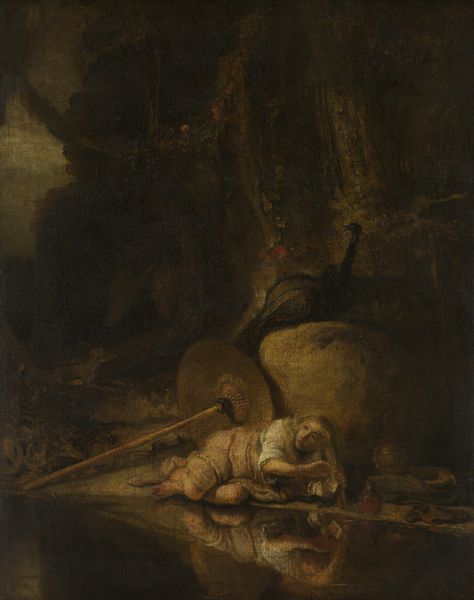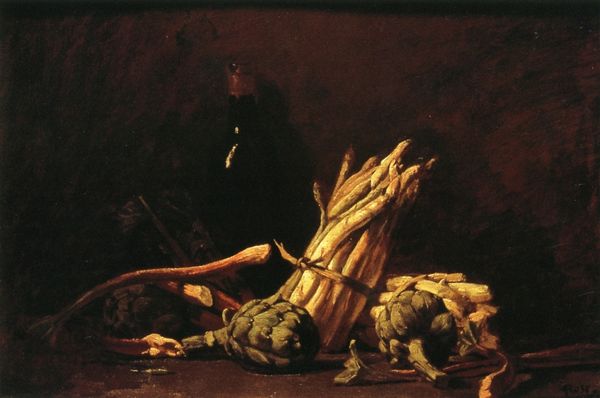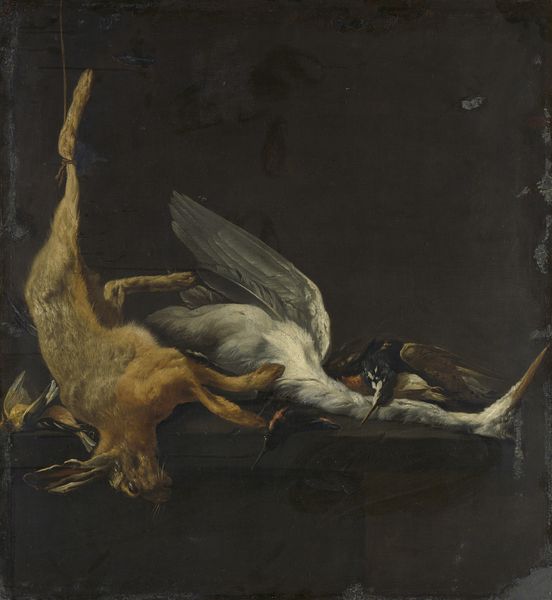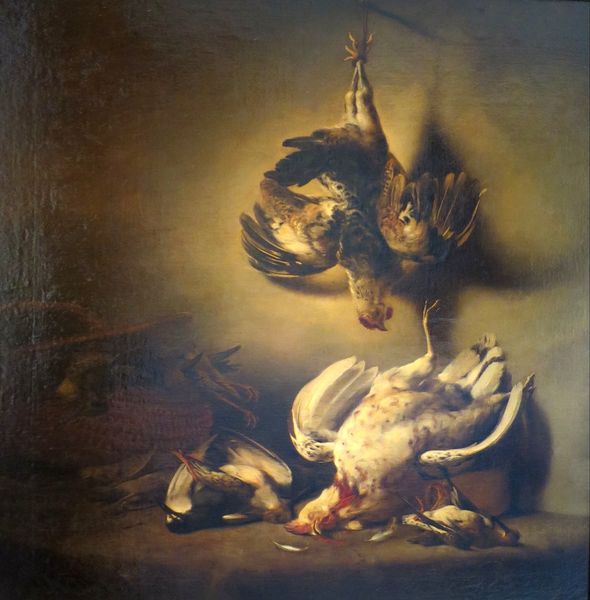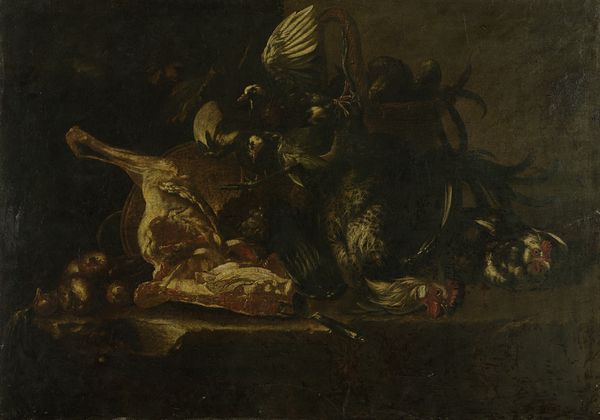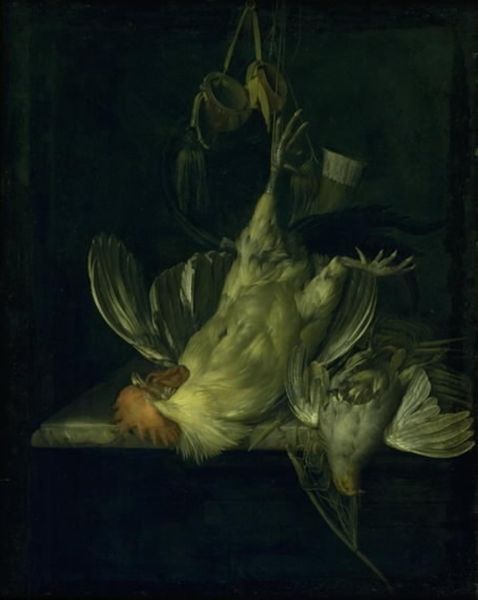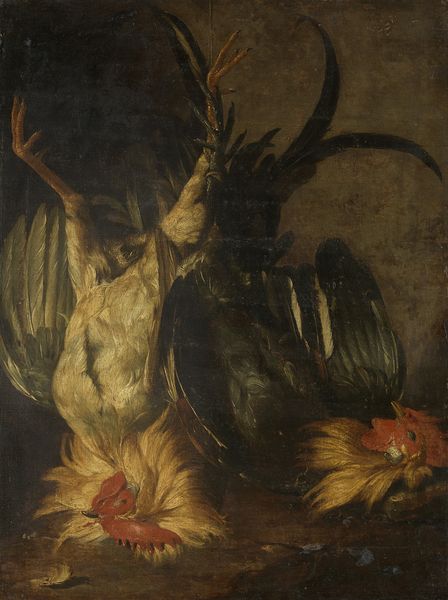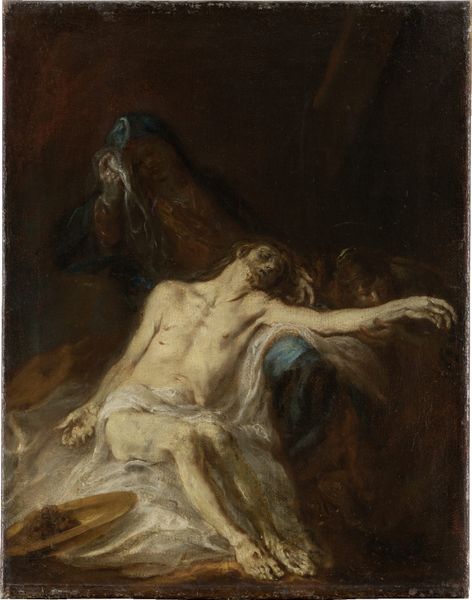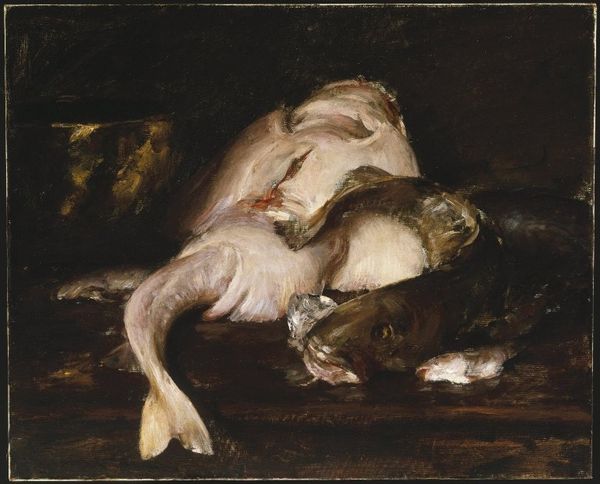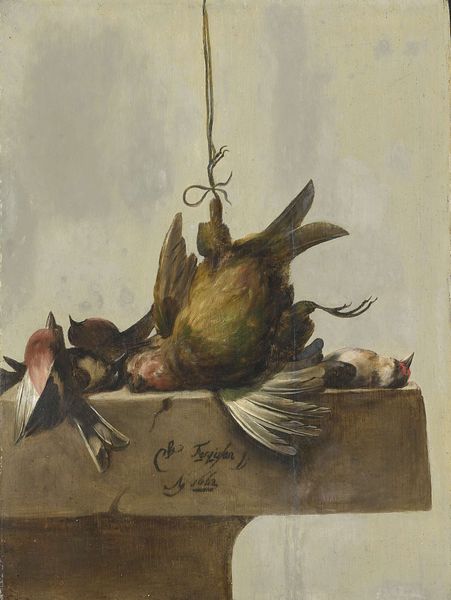
oil-paint
#
baroque
#
dutch-golden-age
#
oil-paint
#
oil painting
#
genre-painting
#
realism
Dimensions: height 47 cm, width 37.5 cm, depth 6 cm
Copyright: Rijks Museum: Open Domain
Curator: Cornelis Lelienbergh's "Still Life with Woodpecker and Snipes" painted around 1655 presents a rather stark composition. What are your initial thoughts on this Dutch Golden Age piece? Editor: There's a quiet intensity to the materiality. The brushwork describing the birds' plumage, combined with their limp forms, speaks volumes about consumption and our relationship to the natural world. Morbidly compelling, wouldn’t you say? Curator: Absolutely. These still lifes were quite popular and often commissioned to display wealth or hunting prowess. They served as conversation pieces about class and cultural values, demonstrating not only artistry but also social standing. Editor: Right, it’s never just about aesthetics, is it? Considering the methods involved, it reveals a reliance on natural resources and raises ethical questions about the production and objectification of wildlife for artistic expression. The cost, essentially, and who bears it. Curator: And the artistic skill shouldn't be ignored. Lelienbergh's representation shows us both the delicacy and vulnerability of these birds. This type of precise naturalism appealed greatly to the burgeoning merchant class in the Dutch Republic. It spoke to their interest in observing and categorizing the world around them. Editor: Sure, that precise observation comes through! But also, thinking about the creation of these works – were they painted from life or from studies? How were these animals acquired and preserved for study? Curator: Excellent questions, those practical aspects provide a deeper understanding of the creative process of the time, moving beyond merely aesthetic interpretations. The image becomes a testament not just to skill, but also to systems of power. Editor: I think approaching this with an eye towards those systemic realities truly enriches the experience. I see these still lifes less as neutral displays of skill, but rather as artifacts loaded with cultural meaning concerning nature and its exploitation. Curator: Exactly. The piece makes us ponder its function within its societal framework. Thanks for highlighting how it embodies cultural and historical values and material concerns of the period. Editor: Always a pleasure to unravel the social threads interwoven in the making!
Comments
No comments
Be the first to comment and join the conversation on the ultimate creative platform.
